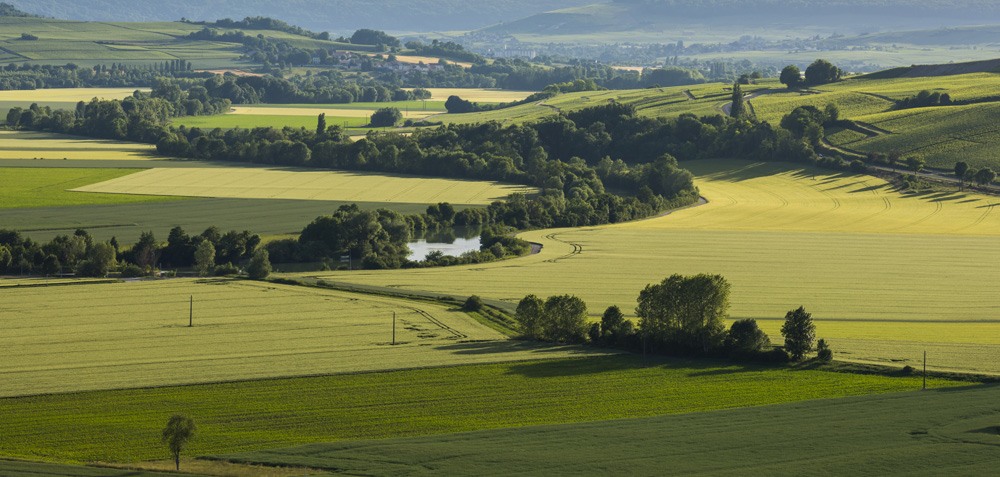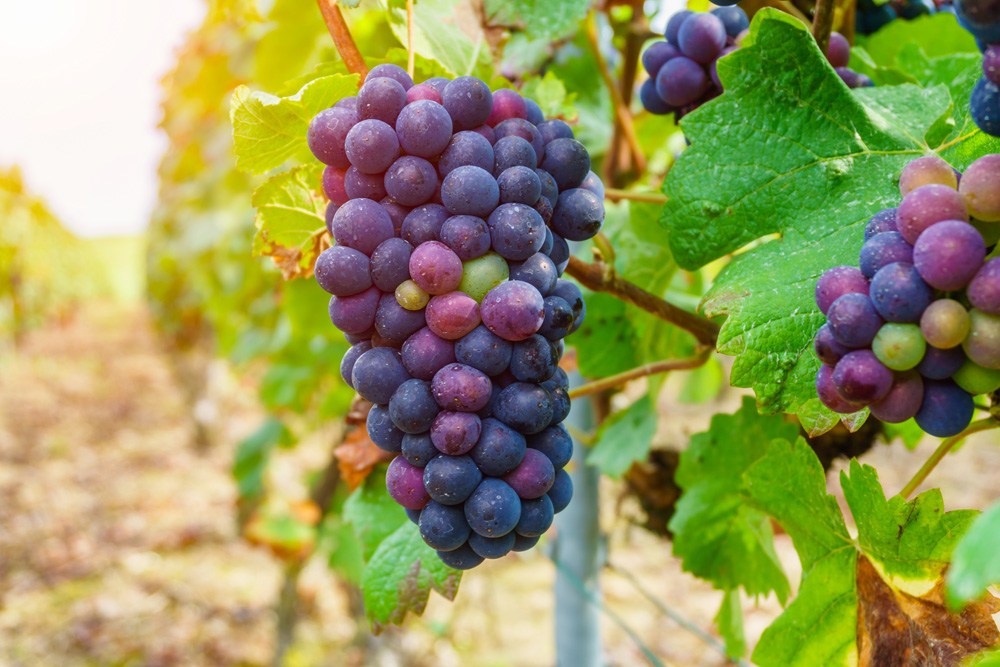Any self-respecting "bubbly" drinker knows it’s not "Champagne" unless it comes from the Champagne region of north-eastern France. The area makes an easy enough addition to your Western Europe trip, but it requires some preparation, and in most cases, advance reservations. Many Champagne houses have a long and proud heritage with reputations stretching around the globe. The kind of unplanned, "walk in" approach that works fine in many wine regions of the world, can make for a pretty dull and disappointing day here. But why would you be so casual? If Champagne is the beverage of choice for special occasions, why wouldn’t you also make an occasion out of visiting its birthplace? It’s easy to get organized and make your day out in Champagne a highlight of your France vacation.
Where and What is Champagne?
The Champagne region centres around two major towns in north-eastern France, Reims and Epernay. Both are extremely pleasant to explore in their own right, but let’s be honest. You’re here to learn about and try the world’s most famous bubbles, and you’ll see enough of these lovely towns to give you a taste of what they’re about as you move between Champagne houses. Many of the top houses, including Veuve and Mumm, are located right in Reims, though for some of the more remote locations, it’s best to join an organized tour. While on your France vacation, you can go it alone on a day trip from Paris, just 45 minutes from Reims by train, or 75 minutes from Epernay. But getting to the more remote champagne houses outside of these towns - not to mention getting between the two if you want to visit both - means negotiating unreliable public buses, and/or expensive cab rides with additional charges. Standards for what can be called "Champagne" are extremely specific, hinging on more than just geography. Champagne is in fact five distinct wine regions, no two of which are exactly alike. Reims is the centre of the Montagne de Reims, which produces full bodied Champagnes designed to be put down for a few years before drinking. Epernay Champagnes tend to be lighter, coming from the Vallee de la Marne, where grape varieties are typically blended, creating unique flavours such as the blanc des noirs.

The magical bubbly itself is produced with two fermentations. The second takes place inside the bottle, which must then sit for a minimum of 18 months to earn its designation as Champagne. Most winemakers prefer to age the bottles for much longer. One of Champagne’s little surprises is that it usually comes from black grapes, specifically Pinot Noir or Pinot Meunier. Only the white flesh is used in the winemaking process however, resulting in the familiar straw colour drinkers know and love. Chardonnay is also accepted as a base grape, and many Champagne houses blend the three varieties to create their own curvee. Finally, if you’re relatively new to Champagne, don’t let the different varieties or terms overwhelm you. Brut, sec, or douce merely refer to the amount of sugar in each bottle, so if you are sampling a range, start with the brut, follow up with sec, and finish with the sweeter wines.

How to Visit a Champagne House… or Three
If you’re a habitual Champagne drinker with a favourite drop, make that producer your pilgrimage and build your day around it. Above all, do not simply turn up on the day. Champagne houses are happy to receive visitors, but their tours and tastings are designed to be experienced by appointment, and drop-ins are often turned away. The price and experience also varies widely. On your France vacation, schedule your visit for a work day, since many of the houses are closed on weekends and public holidays. Book your "must try" Champagne house appointment(s) first, and try to minimize travel time back and forth. Be sure not to flip between houses in Reims and Epernay, for example. If you want to do tastings in both, schedule Reims for your morning and Epernay in the afternoon, or vice versa. Most every Champagne house stops for lunch from around noon to 2pm, and you should do the same. Realistically, your day should start around 10am, after a hearty breakfast fortifies you for the day’s tastings. It’s fairly easy to visit one house in the morning and two more after lunch. You could, in theory, squeeze another house into your morning, but this leaves little time for sightseeing on your France vacation, and could create logistical hassles if any part of your day runs over time. Be prompt to every appointment! Tardiness, besides being rude, can lose you your tour and tasting slot with no refund. Make a good impression on your hosts to ensure a much more enjoyable day for all involved. You’re devoting a day to the most coveted sparkling wine in the world, so dress for the occasion, and begin every conversation in French, carrying it as far as your skills will take you. A sincere effort will always endear you to the locals in Europe, so definitely make one while visiting the home of Champagne.

The Hallowed Halls (and Caves) of Champagne
We’re not going to wade in on the highly subjective topic of which house produces the best bubbly. They call it "tasting" for a reason, after all! But here are some of the most popular names you might want to consider adding to your day in Champagne. All are located in Reims, just to keep things simple, but you don’t have to go far to find alternatives in the surrounding towns, assuming you have transport (ideally driven by someone else). Mumm Mumm’s caves date all the way back to the 1820s, and they’re massive, storing around 25 million bottles of top notch Champagne. Don’t leave without trying the Cordon Rouge. Veuve Clicquot Clicquot didn’t rise to be the grand dame of Champagne without reason. Producing 18 million bottles a year, it’s the second biggest Champagne house in the region. Best of all, tours here range dramatically in price, so you can choose the Clicquot experience that’s right for you. Ruinart Ruinart’s immense chalk cellar looks like a setting from science fiction, but this is in fact the world’s longest established Champagne house, dating back to 1768. The caverns, meanwhile, are left over from Roman times, and are protected as a national monument. Tattinger Four kilometres of caves nurture Tattinger’s beloved bubblies. These include 3 million bottles of Comtes de Champagne, which lies undisturbed for almost a decade before it’s sold. Tresors de Champagne, La Boutique It’s not a Champagne house, but hear us out. Outside the big names, many Champagne growers keep their tasting samples away from the sipping public. Tresors brings together the Champagnes of 28 growers in a beautiful, if super modern space where you can also attend a masterclass on Champagne. It’s a nice contrast to the more traditional houses, and a chance to try some lesser known brands of first rate bubbly.

A Top (and Very Easy) Day Out in Champagne
Goway’s Paris: Discovery of Champagne is a full day tour taking in both Reims and Epernay while on your France vacation. It not only takes care of all transportation, but includes a guided tour of Reims’ Cite des Sacres, where you’ll learn about the town’s history as the coronation site for French royalty. This is followed by a tour of Mumm’s Champagne caves ending in a tasting, before you enjoy time to explore and have lunch on your own. In the afternoon, the tour takes you to Epernay, where you’ll learn more about the Champagne making process before another tasting session. You’ll return to Paris around 6:30pm, in time for another fabulous evening in the City of Lights. You can even order another bottle over dinner. Nobody’s judging!
Christian’s first globetrotting adventure saw him get lost exploring the streets of Saigon. Following his nose to Asia’s best coffee, two lifelong addictions were born. A freelance writer and novelist, Christian’s travels have since taken him around his native Australia, Asia, Europe, and much of North America. His favourite trips have been through Japan, Spain, and Brazil, though with a love of off-beat, artsy cities, he’ll seize any opportunity to return to Paris, New York, or Berlin.
Get Inspired
Inspire your wanderlust with our globetrotting tales.
Unlock more by subscribing to our newsletter
With our newsletter, you’ll get access to regular communications that inspire you and help you explore the world your way

